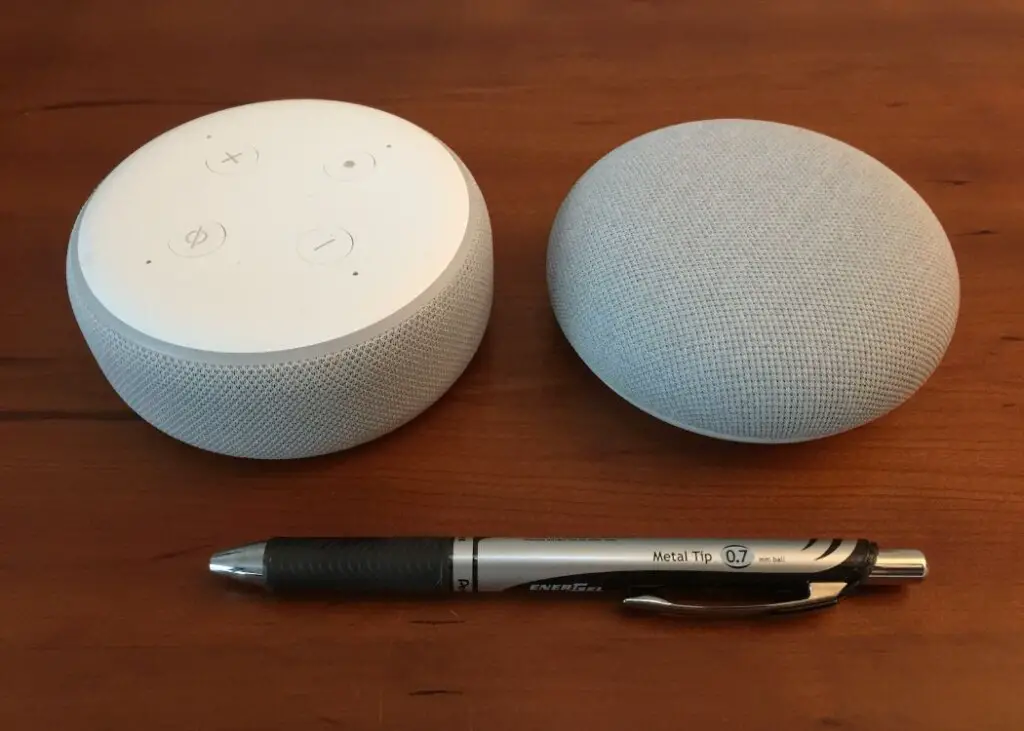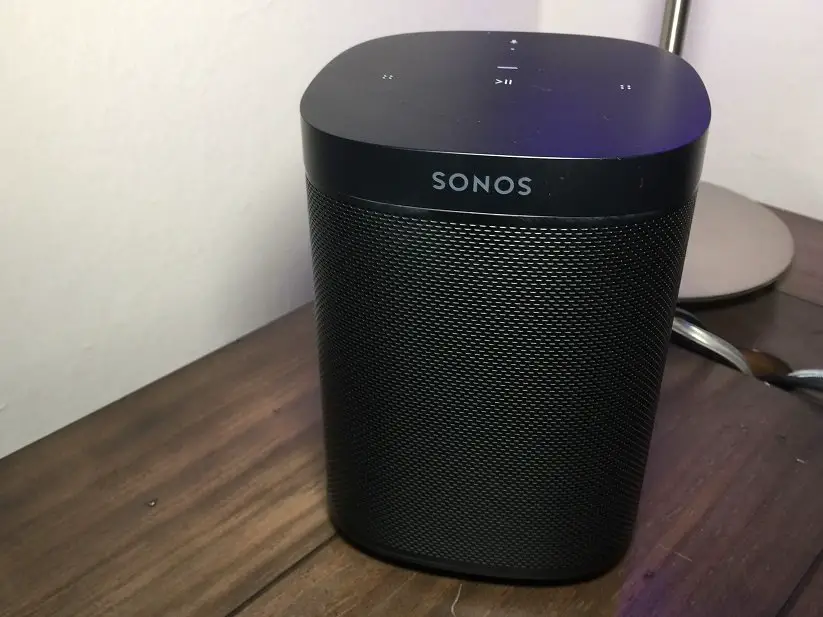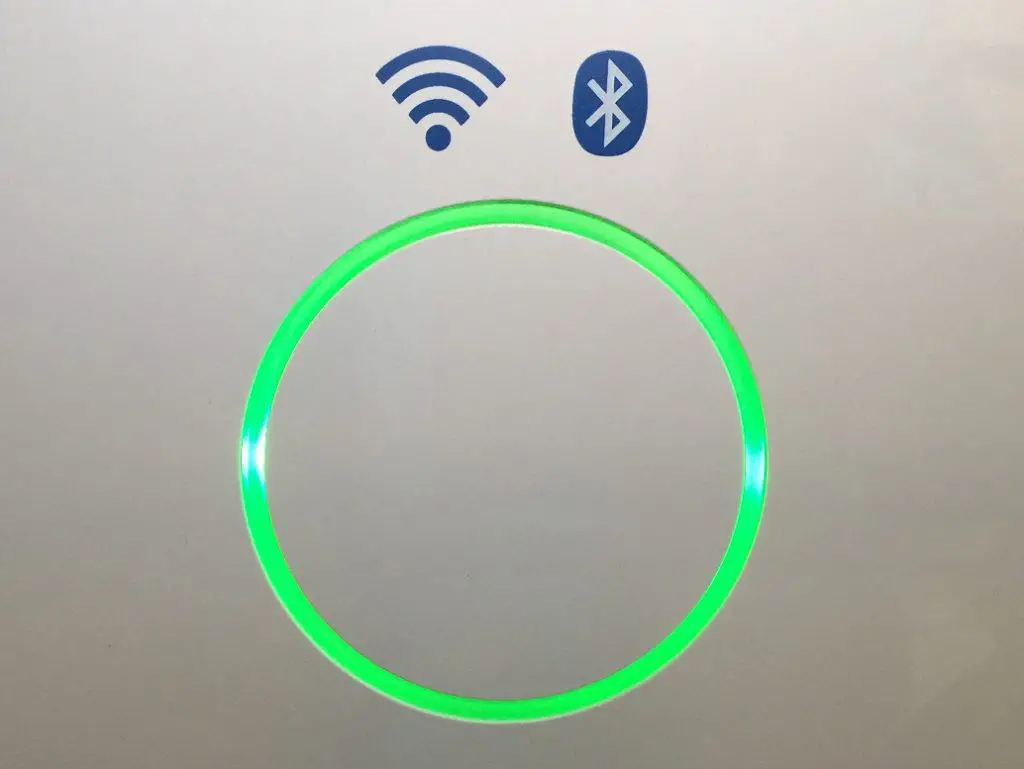Table of Contents
**This page contains affiliate links and I will be compensated if you make a purchase after clicking on my links**
Photo by israel palacio on Unsplash
You’re tucked into bed, all cozy and warm.
Then you suddenly realize you’ve left all the lights on. Or your music is playing, but you want it quiet now, thank you. Or the temperature isn’t quite perfect.
In the old days, you’d have to leave your cozy cocoon and get up and fix the issue. Lights, music, thermostat. Check.
With the advent of voice control, those days are gone.
“Alexa, turn on fan”
“Hey Google, turn off bedroom”
Start in the bedroom
If you are still on the fence about voice control in your home, the bedroom is a good room to start.
Sure, you can use voice to turn on the lights in the bathroom or any other room in your house. But it’s simply faster to flip the switch as you walk in or out.
The bedroom is a different scenario. Using voice not only frees you from getting out of bed but also frees you from screen exposure.
If you’re half-awake, sure you could reach for your phone. (Yes, let’s all admit we sleep with them.)
You could squint at your phone while trying to remember what app you need to open to control the various smart devices installed in your home.
While doing so, you accidentally see a notification from Twitter/email/news/etc. Now you’re distracted.
Also, you’ve just exposed yourself to the blue light emitted from your screen, which has been shown to suppress melatonin levels, leading to poor sleep.
“Alexa, play sleep music”
“Hey Google, what time is it?”
Add a voice control assistant
If you wish to control your home via voice, at present there are two ecosystems available, Amazon’s Alexa and Google Assistant. (No, I don’t count Apple’s Siri.)
Both sell, respectively, Echo Dots or Google Minis. These are small speakers with microphones that you may place all over your home.
Speak and (hopefully) the closest dot will hear you.
The speaker quality is nothing to write home about, but both allow you to pair them with a Bluetooth speaker. This is the simplest way to upgrade your music quality.
Since the rollout of these two platforms, many more voice-enabled devices have been added. Of note, both are integrated into speaker systems (see below) allowing you to enjoy better quality music.
Also, both support (Android-compatible) Smart watches. Wear one of these and you’re done. No need to add Dots all over your home.
If you are a big music listener, your choice may also depend on your preferred music service (see below).

Left: the 3rd gen Amazon Echo Dot.
Right: the 2nd gen Google Nest Mini.
Yes, I have both at present. I’ve had Alexa in place for years, but now I’m giving Google Assistant a go.
Add smart devices
Your voice control device will answer (simple) questions pulled from the internet or tell you a bad joke. You may ask about the weather as you decide what to wear for the day.
But to be useful you need to link it to smart devices.
Smart lights
The easiest place to start is with lighting. You have two ways to control lights, use either smart bulbs or smart switches to control regular bulbs.
If you really like your current bulbs—perhaps they are those trendy vintage Edison bulbs—then choose a smart switch.
However, if you like to dim your bulbs, or better yet, use different-colored light, then go with smart bulbs. For a bedroom, these are the best choice.
Now that you’ve chosen to go with smart bulbs, you have another choice to make. Hub or no hub?
Philips Hue bulbs use a hub. This hub plugs into your WiFi router, so you’ll need a free slot. Once connected, the hub will control up to fifty lights.
Installation from that point is easy. Simply plug in a light, the hub will find it, and you can use your phone app to name and control your new light.
Obviously, only Hue bulbs work with a Hue hub. You’ll need to pick your light family and stick with it for the rest of the house.
Lights without a hub, such as the Kasa Smart WiFi bulb, have their own built-in WiFi. They are fine if you only intend to have 1-2 lights. But let’s be realistic, you won’t stop at two lights…
Their advantage is that you can mix and match them with other types of WiFi or Hub bulbs.
No, these lights don’t require a hub, but setup is a pain. Every so often, the bulbs get confused and you need to repeat the setup procedure.
Setup goes something like this:
- Download the app to your phone; follow instructions
- Install the bulb in your light of choice. It will flash, indicating it’s ready for set-up
- Per instructions, disconnect your phone from your home WiFi and connect it to the bulb’s WiFi
- Once the bulb communicates with your phone, you can now disconnect your phone from the bulb’s WiFi and sign back into your regular home WiFi. (You remember your password, right?)
All smart bulbs come with apps to control them. Most, but not all, are also enabled for voice. At a minimum, you should be able to dim the bulb or place them on a timer.
Hue now makes a third category of lights, that connect via Bluetooth directly to an app on your phone. (The Hue Bluetooth App is separate from the original Hue App that works with the hub.)
The Bluetooth App is limited to only ten lights. And your phone needs to be within thirty feet of the lights to control them. (Although, presumably you can give a voice command from further away if your phone is close enough.)
This is very different from hub-based and WiFi lights that can be controlled from anywhere. As in anywhere in the world, you happen to be.
The Hue hub is optional for these lights. However, without the hub, these lights can’t be part of the full spectrum of routines and scenes.
These lights may be a great way to test the waters before adding a hub.
| Hub smart lights | WiFi smart lights | Bluetooth smart lights |
|---|---|---|
| Pros: – Easy setup – Create routines and scenes – Voice compatible – Control from anywhere | Pros: – No hub required – Mix and match with other brands – Voice compatible – Control from anywhere | Pros: – No hub required – Mix and match with other brands – Voice compatible |
| Cons: – Need a hub – Hub uses WiFi router slot | Cons: – Moderately challenging setup – Routine and scene creation may require third-party app | Cons: – Phone must be within 30 feet of lights – Limited routine and scene creation |
| Build and grow a sophisticated home lighting system | Good to start, for simple lighting tasks | Good to start; expand to a hub-based system later |
The premium bulbs will also allow you to alter the color temperature or even the color itself.
(Don’t forget—no blue light in the bedroom!)
Smart light routines and scenes
Another advantage of the hub system over WiFi bulbs is that you can program several bulbs as a group, rather than individually, to create both routines and “scenes”
Here’s how I’ve used some of these features:
- The light over my front porch is on a timer, to come on in the evening and off in the morning
- A lamp in my dining room is also on a timer so that I always look home in the evening
More sophisticated programs are available. The Hue app is also aware of whether I’m home or away (or rather, if my phone is home or away), and can turn on or off groups of lights as I come or go. No more arriving home to a dark house.
There are also additional routines that you can program for “waking up” or “going to sleep”, where a group of lights can be programmed to gradually turn on or turn off.
- My hallway lights turn on gradually in the morning to help wake me up
- At sunset, my bedroom lights turn on and display a warm amber color (the opposite of blue)
You may also purchase smart light strips of LED lights. If you have crown molding along your ceiling that sticks out, you can place the light strips along the top. Alternatively, high shelves will also work.
If you’d prefer more of a night-light effect, then place the light strips below your raised bed. This is good for both pets, and humans getting up to go to the bathroom.

Photo by Mohammad Saifullah on Unsplash
Smart plugs
Perhaps you don’t require dimming or cool colored lighting. One option is a simple smart plug that plugs into your outlet. From there you can plug in your lamp, or any other device with a plug.
Smart plugs are good for devices that need only be turned on or off.
- For bedroom temperature issues, plug in either a fan or a small space heater
- If your electric blanket doesn’t have an auto-off (or if you don’t trust the auto-off) then plug it into a smart plug. Program the smart plug to shut-off at a certain time.
If you’re too warm:
“Alexa, turn off heater”
“Hey Google, turn off blanket”
Note that items with a digital, as opposed to a physical, on-off switch still require manual effort to press the “on” button, so a smart plug, in this case, will only turn the item off.
So, unfortunately, I can’t program my electric blanket to automatically pre-heat my bed every night.
Smart switches
What about overhead lights? Another option is to switch out your light switch for a smart version. You can still switch it on or off when walking past, but you have the added advantage of controlling it via its app and by voice.

I replaced my whole house fan switch with a smart switch. The switch lives in my hallway, but depending on my bedroom temperature, I can control it via voice.
Unless you’re good with electricity, these will require your electrician to install.
Smart switches have their own WiFi, like the lightbulbs. They don’t require a hub but do require a bit of set-up.
Smart blinds and curtains
I like to sleep with my curtains open, but sleep experts recommend sleeping in total darkness to avoid that melatonin-suppressing blue light. (Assuming you don’t need to get up and risk tripping over yourself…)
You may purchase voice-activated controls for either your blinds or curtains. Program them to close at bedtime.
Then when it’s close to your wakeup time, program them to open and flood your bedroom with morning light.
Bluetooth and WiFi versions are available. The former may remember its programming even if your phone is away. If you have a ZigBee hub (a different ecosystem than the Hue hub discussed above) you may also add smart blinds.
Add streaming music
Both Amazon Alexa and Google Assistant will allow you to access your music service(s) of choice.
Both have their own music services that you can subscribe to.
However, both are also restricted to their own music services. I can’t access Amazon music via Google Assistant. Likewise, I can’t access Google Play Music or YouTube Music via Alexa.
Supported music services
(As of this writing.)
| Amazon Alexa | Google Assistant |
|---|---|
| – Amazon music – Apple music – Deezer – iHeartRadio – Pandora – SiriusXM – Spotify – Tidal – TuneIn – Vevo | – Google Play Music – YouTube Music – Apple music – Deezer – Pandora – SiriusXM – Spotify |
Both music services allow you to create a playlist of your favorite sleep sounds.
“Hey Google, play playlist sleep”
SONOS Smart speakers
Yes, both Amazon and Google sell voice-activated devices with speakers for music. However, any audiophile will poo poo such an arrangement.
The solution is to integrate your voice-activated system with a SONOS music system.
I’ve had a SONOS music system for over a decade, and it’s evolved dramatically in that time.
January 2020 update: SONOS has announced they will no longer support systems containing any legacy equipment introduced between 2005 and 2011.
This is a blow to those of us that have spent thousands of dollars filling our home with their products.
After May 2020, these products will still work but they won’t be updated with new features. (Bug fixes and security patches will still be updated, however.) Because integration with Alexa, Google, and every streaming service is critical, legacy products may cease to work as intended at some point soon after.
In the meantime, I’ll be experimenting with other ways to allow my Alexa and Google devices to communicate with my current speaker set-ups. Stay tuned…
SONOS devices communicate via their own proprietary “WiFi-like” mesh network (“SonosNet”). (SONOS components were using this network long before WiFi was a thing.)
In the old days, one device connected to your router, and then all the rest spread out around your home, had internet access.
If you have multiple SONOS components spread out around your home you can program them to all play the same thing, or group them however you like to play different things. For example, you can have five SONOS components playing five completely different things.
Today, the newer components are compatible with both WiFi and Bluetooth, so an initial connection to your router may only be necessary during set-up.
SONOS devices can access your computer hard drive for your personal digital music collection. Alternatively, they can access pretty much ANY music service, via their App.
Today, SONOS specializes in standalone self-amplified speakers. Simply plug them in anywhere and listen to your music.
Alternatively, if music quality is important to you, SONOS also sells components to integrate into your current home theater arrangement to stream music.

The SONOS One is a standalone speaker fully integrated with either Amazon Alexa or Google Assistant.
(If you switch teams, as I have, it will work with either service.)
Instead of installing Dots or Minis all over your house, you may instead install SONOS One speakers.
Alexa allows you to program the command “play music” to play your SONOS system rather than the default Alexa speaker.
Likewise, Google Assistant easily integrates with SONOS:
“Hey, Google, play music on SONOS”
For those of us with Apple devices, SONOS also now supports AirPlay. Use your iPhone / iPad / iWatch to play your music, then transfer it to your SONOS system.
If at least one SONOS component supports AirPlay, the entire network will play your music.
Smart thermostats and other comfort devices
The first smart thermostat was the Nest (now owned by Google). Based on how often you walk by, it determines when you are home or away and adjusts the temperature accordingly.
(As I have pets that I would like to be comfortable I never found this feature particularly appealing.)
These smart devices also allow you to turn your heat or AC on or off remotely. Either from another state or simply the next room.
Nest now also sells connected temperature sensors that can be placed in multiple rooms for greater control. You may place one in the bedroom and ensure your preferred temperature is maintained at a particular time of day.
There are now several other (less expensive) brands selling smart thermostats that also work with added sensors. Look for brands supporting either Amazon Alexa or Google Assistant.

Almost every new appliance now sells a version that integrates with voice control. Including HEPA filter units and humidifiers.
However, controlling these appliances is not exactly straightforward:
“Alexa ask Guardian Technologies to turn on air purifier”
I had to look that up just now. Using a smart plug would be easier.
This review has focused on the bedroom, however, smart devices now control our entire home, including our home theater, door locks, doorbells, security cameras, garage doors, and sprinklers.
Is there any reason to get out of bed?
Voice Control Checklist
- Lights
- Lights with hub
- Lights with WiFi
- Lights with Bluetooth
- Plugs
- Switches
- Blinds & curtains
- Music
- Thermostats
- Other comfort devices
- Voice control system: Amazon or Google
Want to learn more about the products mentioned?
[If you experience issues with menus or links not working, it is most likely due to your Ad blocker.]



